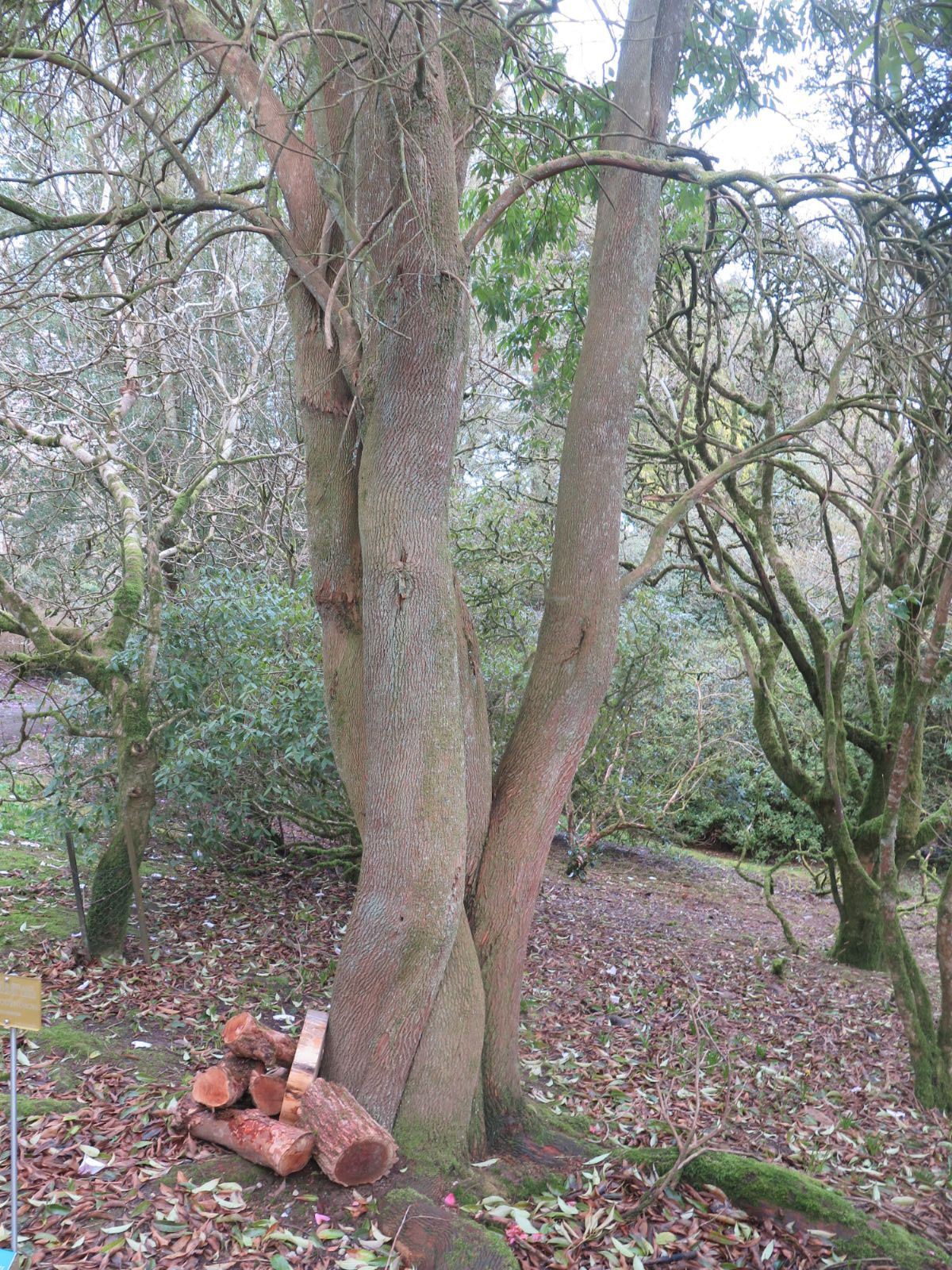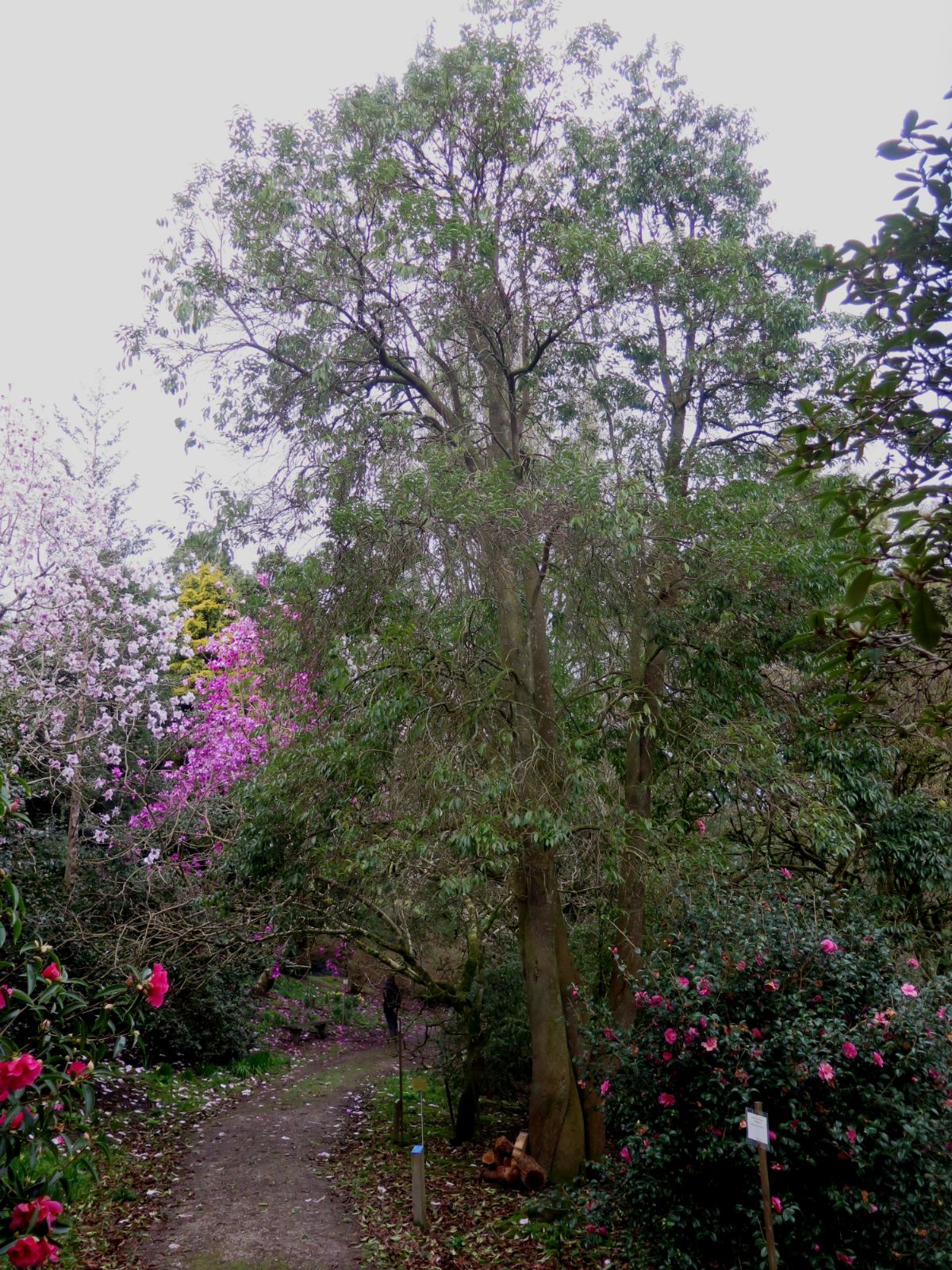Craibiodendron yunnanense
Credits
Article from New Trees by John Grimshaw & Ross Bayton
Recommended citation
'Craibiodendron yunnanense' from the website Trees and Shrubs Online (treesandshrubsonline.
Genus
Other taxa in genus
Shrub or tree to 11 m. Bark grey and longitudinally furrowed. Branchlets glabrous to sparsely pubescent. Leaves elliptic or oblong to obovate or ovate, 4.3–15.5 1.5–3.8 cm, base cuneate, apex long-acuminate but with blunt tip, margin flat, sometimes revolute near base, black punctate-glandular below, midvein glabrous to sparsely pubescent in its lower half, secondary veins prominent; petiole 2–13 mm. Inflorescence a panicle-like cyme, 4.5–20 cm, the secondary branches bearing two to six (to eight) flowers and glabrous to sparsely pubescent. Pedicels robust, 1–6 mm, sparsely pubescent. Flowers numerous; calyx lobes broadly ovate-triangular, pointed, to 1.5 2.2 mm, glabrous externally; corolla urceolate to cylindrical, 4–6 1.5–4 mm, lobes very short, cream to red or grey-purple, externally glabrous except for papillae towards the base; filaments to 4 mm, anther to 1 mm; ovary and style glabrous. Capsules subglobose to ovoid, 6–11 7–13 mm; seeds 4–7 mm. Flowering (May to) June to August (to October) (China). Judd 1986, Fang & Stevens 2005. Distribution CHINA: Xizang, Yunnan; MYANMAR. Habitat Thickets and open rocky areas in temperate to warm-temperate forests, and at the edges of coniferous forests between 1200 and 3200 m asl. USDA Hardiness Zone 8–9. Conservation status Not evaluated. Illustration Judd 1986, Lancaster 1989; NT278. Cross-reference S194.
Considering the general interest in ericaceous plants it is somewhat surprising that Craibiodendron is not better known. It is arguably at its best as it flushes bright coppery red in spring, like Pieris, but the glossy green leaves are also attractive, even if the flowers are perhaps less so (Lancaster 1989). Roy Lancaster gathered seed on the Da Shao, Yunnan in 1981, and in the same year it was collected by the Sino-British Cangshan Expedition, by a team from the Royal Botanic Garden Edinburgh (SBEC 117, 1147). Material from this latter expedition is cultivated under glass in Edinburgh and outside at Logan, as well as at Tregrehan. Here it is developing a single stem, about 5 m tall in 2008, and is reported to be ‘relatively hardy’ (Hudson 2004). A number of introductions have been attempted at the David C. Lam Asian Garden in Vancouver, but the only one to meet with success (so far) has been from Keith Rushforth’s gathering KR 7523 at 2400 m on the Lancang Daxue Shan, Yunnan. Although this specimen is still young it has so far survived a hot, droughty summer and heavy snow with temperatures down to –9 ºC (P. Wharton, pers. comm. 2006). The species has been offered commercially in the Pacific Northwest.



